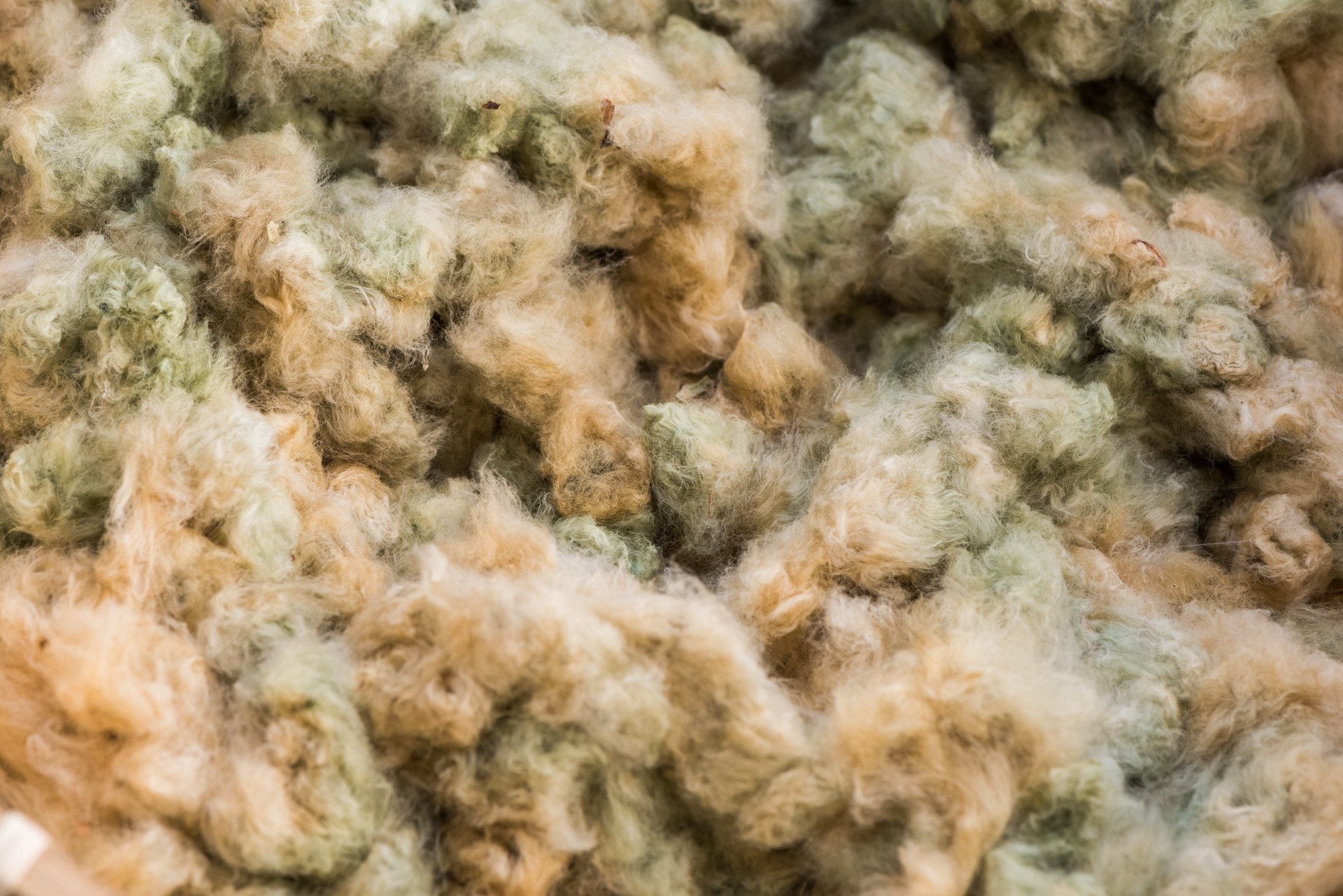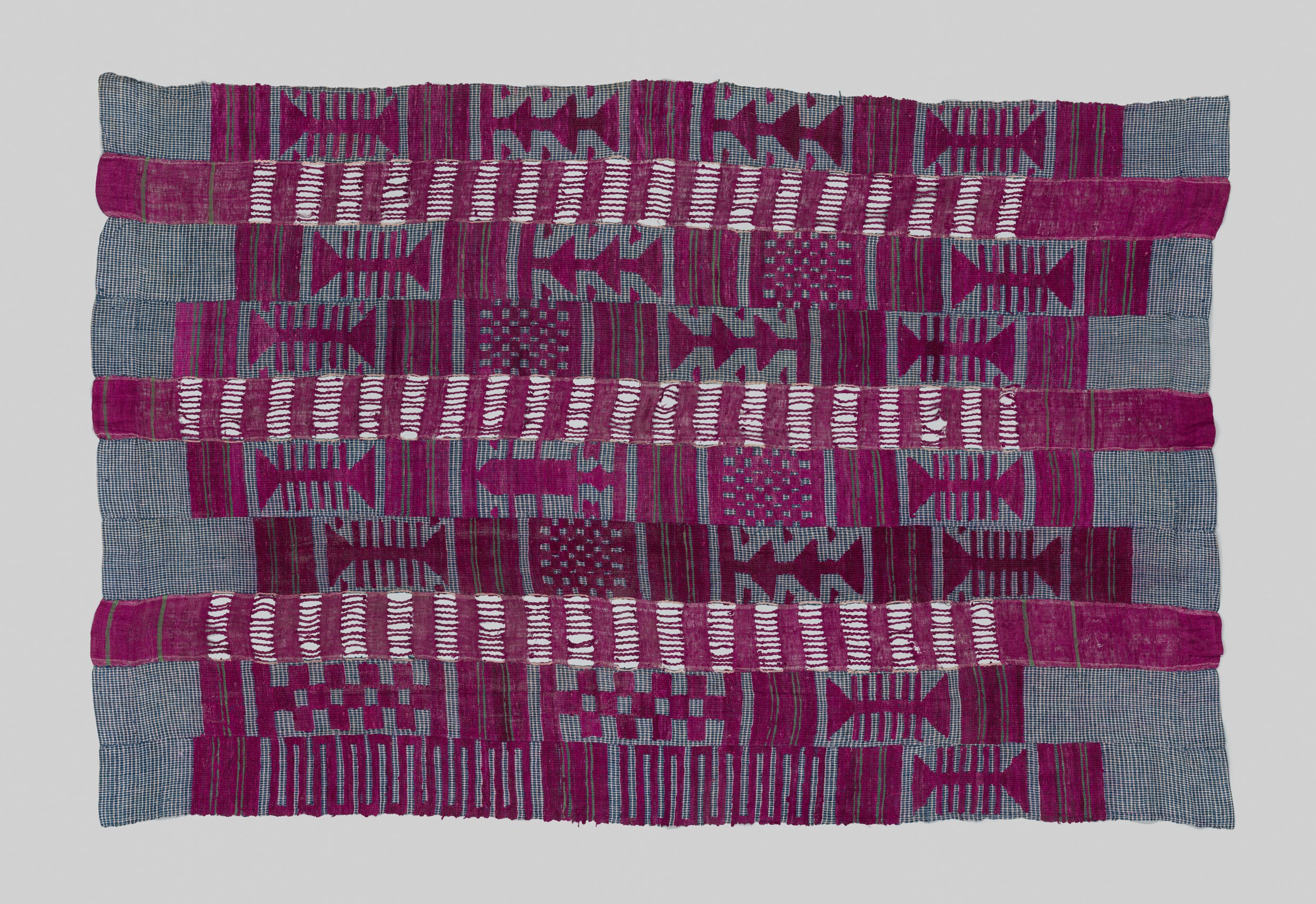
THE CLOTHING RESTORATION PROJECT
BLOG 004
03.07.2024
COTTON EXPLORATION: THE ANCIENT HISTORY OF THE COTTON PLANT (PART 2)
In the previous blog, we covered cotton cultivation in India and the Middle East. This section delves into West Africa and the Americas.
West African Cotton and Masters of Indigo
“Cotton is what one should plant, not brass; cotton is what one should plant, not beads; as for brass and beads, neither goes with one to the grave; on the day one dies, only cloth accompanies one.“- Yoruba Proverb - (Owomoyela, 2005)
There is archaeological evidence of cotton textiles in Hausaland (now part of Nigeria) from as early as the 9th century, but cotton cloth likely became widely produced and traded within several areas in West Africa by the 11th century. Cotton production impacted agricultural practices and created communities of spinners, weavers, dyers, tailors and textile traders (Kriger, 2005). Cotton was produced in large amounts throughout West Africa from the Guinea Coast, to Sierra Leone, to the Kingdom of Dahomey (now Benin), and Kingdom of Mali, most of which were spun, dyed, and hand-woven by women (Kriger, 2006). The taste for textiles of all kinds in much of West Africa was so high that many societies both produced their own fabrics and imported them, and a large proportion of families would have made some kind of living from cotton cultivation and textile production (Kriger, 2006). People would collect fabrics for clothing as well as for displays of wealth, and textiles were often decorated with adornments, especially beads, forming an important and essential part of culture (Nyambura, 2012). Fine, elaborate cotton clothing was reserved for the upper classes, and strict rules emerged for who could wear what (McGregor, Akou and Stylianou, 2022).
Yoruba woman weaving strip cloth on a traditional vertical loom, circa 1970. | Credit: Collectie Stichting Nationaal Museum van Wereldculturen
Aso oke shawl woven by Yoruba weavers in Nigeria, 19th century. | Credit: Met Museum
In these production centers, cloth was woven on vertical looms in strips, which could then be sewn together into other clothing items (Kriger, 2005). Benin (formerly the Kingdom of Dahomey), the former Oyo Empire, and Mali were particularly known for producing and exporting indigo-dyed cotton cloths for export, which were coveted for their depth of color and elaborate patterns (Kriger, 2005). Other areas were well known for cloths that were woven with complex patterns as part of their structure. Cloth of all kinds was so valuable and useful that it was used as currency in the majority of West African societies and was used to facilitate trade with East Africa. Currency cloths of varying quality were woven in long strips that could be cut to be sewn into other items, like tunics and headwraps (Frederick, 2018; Johnson, 1980). For the Yoruba, in today’s Nigeria, indigo-dyed cotton cloth was valued beyond currency; it was an essential part of life.
“Cloth belonging to a woman in old Yorubaland follows her through countless journeys. It is the wrapper she receives from her mother when she marries. It is the oja (baby tie) she uses to carry her child. If she becomes a chief, she wears a fine glistening cloth, beaten to a high sheen. Cloth is even with her during her final journey. Her voyage into the realm of ancestors, shrouded in the cloth she wore in life, dyed for the last time an endless indigo black.” (Hamilton, 2021) – Quote on importance of Indigo cloth to Yoruba women
Aṣọ ẹbí worn by sisters.
In these various societies, textiles also served as an essential means of communication. Textiles decorated with specific symbols, colors, and patterns held meanings that communicated information about culture, ethnic identity, societal status, and history. Kente cloths woven in what is now Ghana by the Ashanti and Ewe people were called the “cloth of kings' were—and still are— worn for specific ceremonies by high-status socio-economic status and dignitaries. Different patterns and symbols are associated with certain events, or sayings and proverbs (Kwakye-Opong, 2014). Aṣọ òkè cloth worn by the Yoruba are another intricate, ceremonial cloth, which is woven in strips and then pieced together in a process that is traditionally done by hand. Today, it is popular for family and friends to wear matching aṣọ òkè and other fabrics to signal strong familial and social ties, which is called aṣọ ẹbí (Tade, 2020).
Wari and Incan Cotton – Meaning Through Symbols
Peruvian woman weaving using a backstrap loom, 2016. Credit: Tydence Davis.
Due to the harsh mountain environment of the Andes, clothing, especially light and warm clothing, has always been considered extremely important for survival in Peru. Cotton, alongside Alpaca and Llama fiber, have been used for thousands of years in this region to create garments and works of art that can withstand the cold and arid highlands.
Archaeologists have found cotton seeds that date back to around 5000 years ago in modern Peru, which are also some of the oldest seeds found in that area (Dillehay et al., 2007). This leads archaeologists to conclude that cotton may have been domesticated earlier than many food species in this area.
Complex woven cotton fabrics formed an important economic and social aspect of the Wari and Incan civilisations. The Wari civilization, which predates the Incan Empire, was a culture of master weavers. They wove complex geometric textiles, with patterns that signified meanings about power and influence to viewers (Cook, 1996). In Wari and Incan culture, textiles were of the highest value, and were prized as highly as precious metals (Dass, 2001). Garments worn by powerful people made use of complex and ornate patterns, which signaled meanings about power and influence to viewers. The Quechua languages of the Andes are oral languages, and weavers, mostly women, recorded thoughts, feelings, and stories through the ornate patterns of their weavings (Conklin, 1997; Silverman, 2008). At the time of the Spanish conquistadors, the Spanish marveled at the beautiful colors and patterns found in Andean cotton textiles (Beckert, 2015).
The textile tradition of the Andes continues today and is a vital part of Indigenous Andean cultural heritage.
The cultivation of cotton and weaving are skills that are informed by the deep roots of generational and ancestral knowledge. Communities gather and form around the spinning and weaving of cloth, and pass stories and knowledge down through families and generations through textile (Heckman, 2003).
Many Quechua communities still use the same technologies, such as backstrap looms, that were developed thousands of years ago to spin and weave brilliantly colored, complexly patterned textiles.
Wari tunic depicting catfish, circa 9th Century. | Credit: Met Museum
Aztec Cotton and Present-day Mayan Cultural Resistance
Mother teaching her daughter how to weave, circa 1541 in the Codex Mendoza. | Credit: Bodleian Library
Cotton was likely domesticated in the Yucatan peninsula in present-day Mexico, possibly up to 4,000 years ago (Wendel, Brubaker and Percival, 1992). It is the cotton species from this area that is grown in 97% of cotton cultivation today (U.S. Department of Agriculture, 2022).
Cotton came to be an important part of daily social, spiritual, and economic life in ancient Mayan civilizations (spanning from 2000 BC to the 10th century) and the Aztec empire (15th century to 17th century), with people of all ages involved in cotton textile production (Muriel Porter Weaver, 2020; Strawn, 2002). Like in the other cultures detailed above, cotton was traditionally grown on a subsistence level alongside other crops. Traditional agriculture from this area is called a milpa system, where multiple crops are grown together in an ecologically diverse, resilient system. In some milpas, cotton is still grown today alongside corn or squash (Vega et al., 2023).
A lot of the information we have today about the importance of cotton fiber and its preparation during Aztec civilization come from a document called the Codex Mendoza, which was commissioned around 1541 by the Spanish ruling class to document daily life in pre-conquest Aztec society. In the Codex Mendoza, baby girls are shown receiving tools for spinning cotton cloth right after their birth. Aztec girls learned how to spin cotton from childhood, and taught how to weave only when they became young adults. Cotton cloth, which was made by women in Aztec society, was so valuable and fine that the average household would not create cotton clothing for themselves, but pay it as tribute to the ruling class. Cotton cloth was so important to ancient Maya and Aztec societies that it was used to pay debts and taxes (Strawn, 2002).
Just as in all the ancient societies discussed, clothing, ways of dress, and specific patterns communicated information about spirituality, status, and personality in ancient Mayan and Aztec life (Strawn, 2002) Spanish colonization tried to extinguish Indigenous ways of life and expression in Central America starting in the 16th century (Holloway, 2011). In the fight for independence from Spanish rule, Maya clothing styles and traditional ways of spinning and weaving persisted and developed into important symbols of freedom all over Central America (Fischer, 2001). For present-day Indigenous Central Americans, including the Maya, cotton weaving and design plays an important role in preserving their cultural heritage and forms a thriving artisan industry (Pitman, 2020)
Conclusion
Cotton, and the spinning and weaving of fabrics from cotton formed an important cultural and economic part of life in many ancient cultures, which share many similarities in how this was expressed. All five cultures that we explored developed complex woven cotton fabrics that were valued enormously for their beauty and functionality. Textile designs carry symbolic importance in all cultures, but have even more direct meanings that can be interpreted in cultures with strong oral traditions, like in the various West African and Indigenous Peruvian cultures. In these areas, cotton was grown on a household subsistence level alongside other crops, and this is reflected in traditional farming communities today, such as in the milpa of central America and in smallholder farms in West Africa.
Today, while traditional artisan cotton textiles made by masters are still valued in these cultures, these traditions and artisans are threatened by modern industrial cotton and mass-produced textiles of lower price and quality. In our next blog, we will detail the historical process, starting with British colonization and trade in human beings, that led to the industrial cotton industry and the capitalist economic system that we live under today.
Sources:
Brite, E.B. and Marston, J.M. (2013). Environmental change, agricultural innovation, and the spread of cotton agriculture in the Old World. Journal of Anthropological Archaeology, 32(1), pp.39–53. doi:https://doi.org/10.1016/j.jaa.2012.08.003.
Conklin, W. (1997). Structure as Meaning in Andean Textiles. Chungara: Revista de Antropologia Chilena, 29(1), pp.109–131.
Cook, A. (1996). The Emperor’s New Clothes: Symbols of Royalty, Hierarchy and Identity. Journal of the Steward Anthropological Society, 24(1 and 2), pp.85–120.
Coppens d’Eeckenbrugge, G. and Lacape, J.-M. (2014). Distribution and Differentiation of Wild, Feral, and Cultivated Populations of Perennial Upland Cotton (Gossypium hirsutum L.) in Mesoamerica and the Caribbean. PLoS ONE, 9(9), p.e107458. doi:https://doi.org/10.1371/journal.pone.0107458.
Dass, R. (2001). The Spanish Unraveling of the Incan Empire: The Importance of Fibers and Textiles of the Past. University of Wisconsin-Superior McNair Scholars Journal, 2.
Dayalan, D. (2021). Silk and Cotton Textiles, the Principal Maritime Trade Commodities of Ancient India. Acta Via Serica, 6(2).
Dillehay, T.D., Rossen, J., Andres, T.C. and Williams, D.E. (2007). Preceramic Adoption of Peanut, Squash, and Cotton in Northern Peru. Science, 316(5833), pp.1890–1893. doi:https://doi.org/10.1126/science.1141395.
Gorvett, Z. (2021). The ancient fabric that no one knows how to make. [online] www.bbc.com. Available at: https://www.bbc.com/future/article/20210316-the-legendary-fabric-that-no-one-knows-how-to-make.
Heckman, A.M. (2003). Woven stories : Andean textiles and rituals. Albuquerque: University Of New Mexico Press.
Kriger, C.E. (2005). Mapping the History of Cotton Textile Production in Precolonial West Africa. African Economic History, 33(33), pp.87–116.
Liu, L., Levin, M.J., Klimscha, F. and Rosenberg, D. (2022). The earliest cotton fibers and Pan-regional contacts in the Near East. Frontiers in Plant Science, 13. doi:https://doi.org/10.3389/fpls.2022.1045554.
McGregor, J., Akou, H.M. and Stylianou, N. (2022). Creating African Fashion Histories. Indiana University Press.
Menon, M. and Uzramma (2017). A Frayed History. Oxford University Press.
Minturn, L. (1996). The Economic Importance and Technological Complexity of Hand-Spinning and Hand-Weaving. Cross-Cultural Research, 30(4), pp.330–351. doi:https://doi.org/10.1177/106939719603000404.
Moulherat, C., Tengberg, M., Haquet, Jérôme-F. and MilleB. (2002). First Evidence of Cotton at Neolithic Mehrgarh, Pakistan: Analysis of Mineralized Fibres from a Copper Bead. Journal of Archaeological Science, 29(12), pp.1393–1401. doi:https://doi.org/10.1006/jasc.2001.0779.
Nyambura, R., Campus, N., Nyamache, T., & Nyabisi, E. (2012). Beads and Beadwork in Africa. Journal of Education and Social Sciences, 1(2), 33-41.
Peters, M.A. (2019). The ancient Silk Road and the birth of merchant capitalism. Educational Philosophy and Theory, 53(10), pp.1–7. doi:https://doi.org/10.1080/00131857.2019.1691481.
Silverman, G. (2008). A Woven Book of Knowledge: Textile Iconography of Cuzco, Peru. University of Utah Press.
Sven Beckert (2014). Empire of cotton : a global history. New York: Alfred A. Knopf.
Toups, M.A., Kitchen, A., Light, J.E. and Reed, D.L. (2010). Origin of Clothing Lice Indicates Early Clothing Use by Anatomically Modern Humans in Africa. Molecular Biology and Evolution, 28(1), pp.29–32. doi:https://doi.org/10.1093/molbev/msq234.
Vedeler, M., & Hammarlund, L. (2017). Reconstructing the Tunic from Lendbreen in Norway. Archaeological textiles review, 59, 24-33.
Wayland Barber, E. (1996). Women’s work - the first 20, 000 years : Women, cloth, and society in early times. New York: W.W. Norton.
Yvanez, E. and Wozniak, Magdalena M. (2019). Cotton in ancient Sudan and Nubia. Revue d’ethnoécologie, (15). doi:https://doi.org/10.4000/ethnoecologie.4429.






